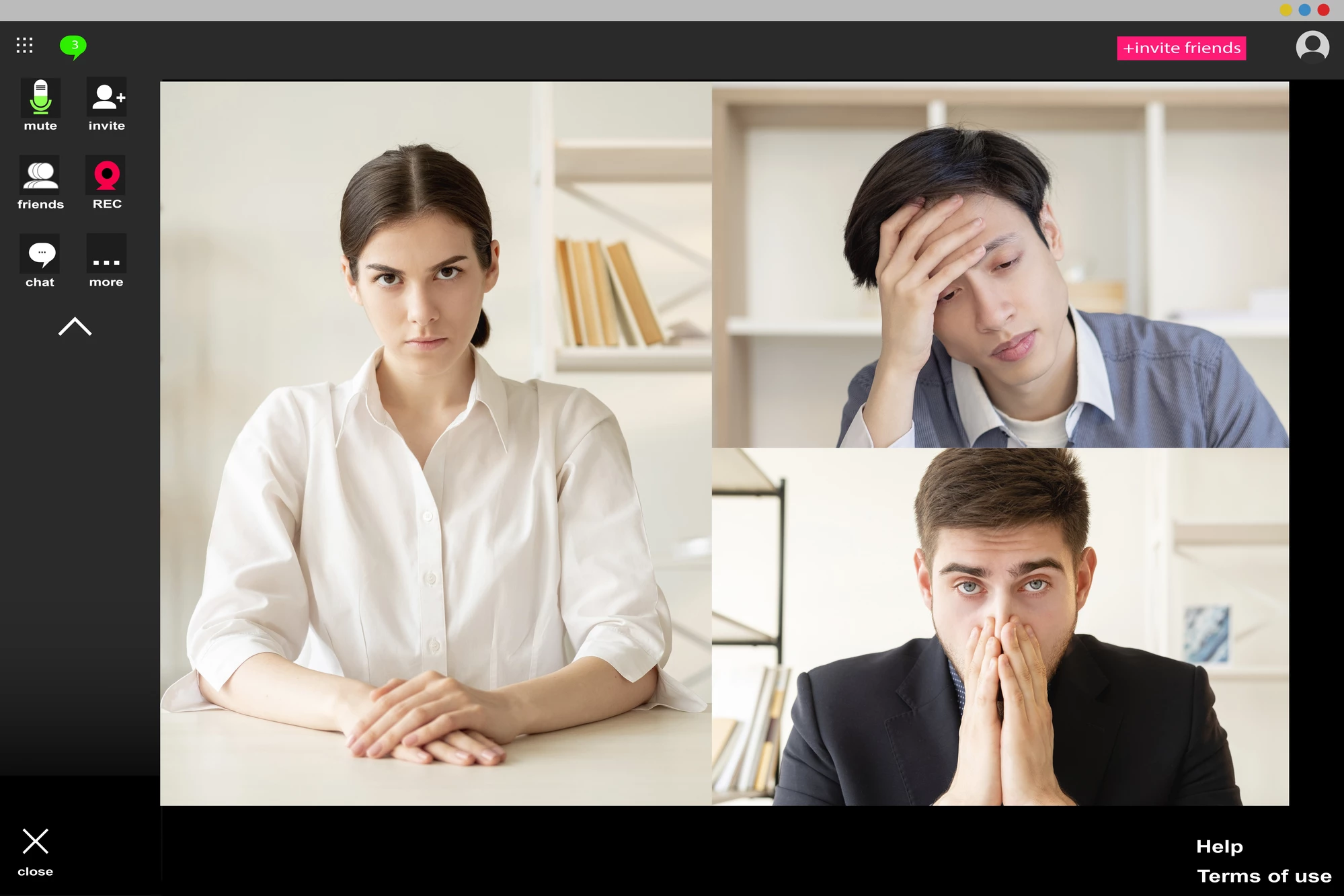Following an influential analysis published in February, a team of Stanford University researchers has conducted the first large survey into the very modern phenomenon of "Zoom Fatigue." The new study reveals women suffer from greater exhaustion following videoconferencing compared to men, and the researchers think they know why.
Over the last year, millions of people have been working from home. Meetings previously conducted in person suddenly shifted to videoconferencing platforms such as Zoom. And as 2020 progressed, more and more people started noticing a unique kind of exhaustion at the end of a day filled with video meetings.
Referred to as "Zoom Fatigue," this new phenomenon is now the subject of novel academic research. Jeremy Bailenson, founding director of the Virtual Human Interaction Lab at Stanford University, recently laid out some theoretical foundations underpinning Zoom Fatigue and now, a team of Stanford researchers has presented some of the first empirical data investigating the condition.
The new research, not yet peer-reviewed or published in a journal, surveyed more than 10,000 subjects using the newly developed Zoom Exhaustion & Fatigue Scale (ZEF Scale). One in seven women reported feeling "very" or "extremely" fatigued after Zoom interactions, compared to just one in 20 men.
“We’ve all heard stories about Zoom fatigue and anecdotal evidence that women are affected more, but now we have quantitative data that Zoom fatigue is worse for women, and more importantly, we know why,” says Jeffrey Hancock, a co-author on the new study.
Bailenson’s earlier research hypothesized four key ways videoconferencing can be uniquely tiring. These reasons include the stress of constant eye gaze, the increased cognitive load generated by interpreting video cues, and the inability to move around during a meeting.
The fourth way Zoom calls can lead to exhaustion is called "mirror anxiety," which refers to the hypothesis the self-view window on videoconferencing calls can lead to heightened levels of self-focused attention.
“Imagine in the physical workplace, for the entirety of an eight-hour workday, an assistant followed you around with a handheld mirror, and for every single task you did and every conversation you had, they made sure you could see your own face in that mirror,” Bailenson explained in his February article.
The ZEF scale survey includes open-ended questions allowing for the measurement of these four exhaustion factors. And those questions interrogating feelings related to "mirror anxiety" were answered at significantly higher rates by women compared to men. The researchers suggest it is most likely the key factor that accounts for the greater levels of exhaustion women feel following videoconferencing.
“Consistent with psychological research on self-focused attention and negative affect, women experienced more mirror anxiety associated with the self-view in video conferencing than men, and mirror anxiety was a primary mediator for the gender effect on fatigue,” the researchers write in the study.
Interestingly, the data also revealed women were less likely than men to take breaks between meetings, and their meetings tended to run longer despite both men and women reporting the same average number of meetings each day.
While the most simple solution for "mirror anxiety" is obviously to shut down the self-view window during Zoom calls, this singular hypothesis may not be the only reason behind the discordant gender finding. The study does reference a burgeoning body of evidence showing the COVID-19 pandemic disproportionately impacts women, from heightened childcare loads to greater economic hardship.
Emily Falk, from the University of Pennsylvania, suggests there are so many other confounding variables it is difficult to easily sum up exactly why women may be more susceptible to Zoom Fatigue than men. Speaking to The New York Times, Falk, who did not work on this new research, says she found the findings matched her own experience over the past year.
“… anecdotally, as a woman who has been Zooming a lot and running a large lab and taking care of kids, the findings did feel acknowledging and that’s important,” Falk says. While she also notes, “It’s correlational data and there could be other potential variables at play here. When we’re feeling exhausted right now, how full is our emotional or mental tank to begin with?”
The Stanford team is clear in pointing out this kind of Zoom Fatigue research is still in its infancy and there are lots of unanswered questions needing further investigation. For example, a longitudinal study following individuals reporting Zoom Fatigue over weeks, or even months, is needed to understand whether this condition accumulates over time or whether one becomes desensitized to the unique kind of exhaustion.
Moving forward, the Stanford team recommends the burden of Zoom Fatigue should be shared by companies and that policies can be implemented to mitigate this fatigue.
“… these findings can help companies become aware of the extra Zoom fatigue experienced by women and adapt their policies and culture at the institutional level,” the new study concludes. “For example, companies could prohibit the use of video in a subset of meetings, and provide 13 guidelines on how frequent and long meetings should be, along with recommendations for intervals between meetings.”
The new study has been published on the Social Science Research Network.
Source: Stanford News




